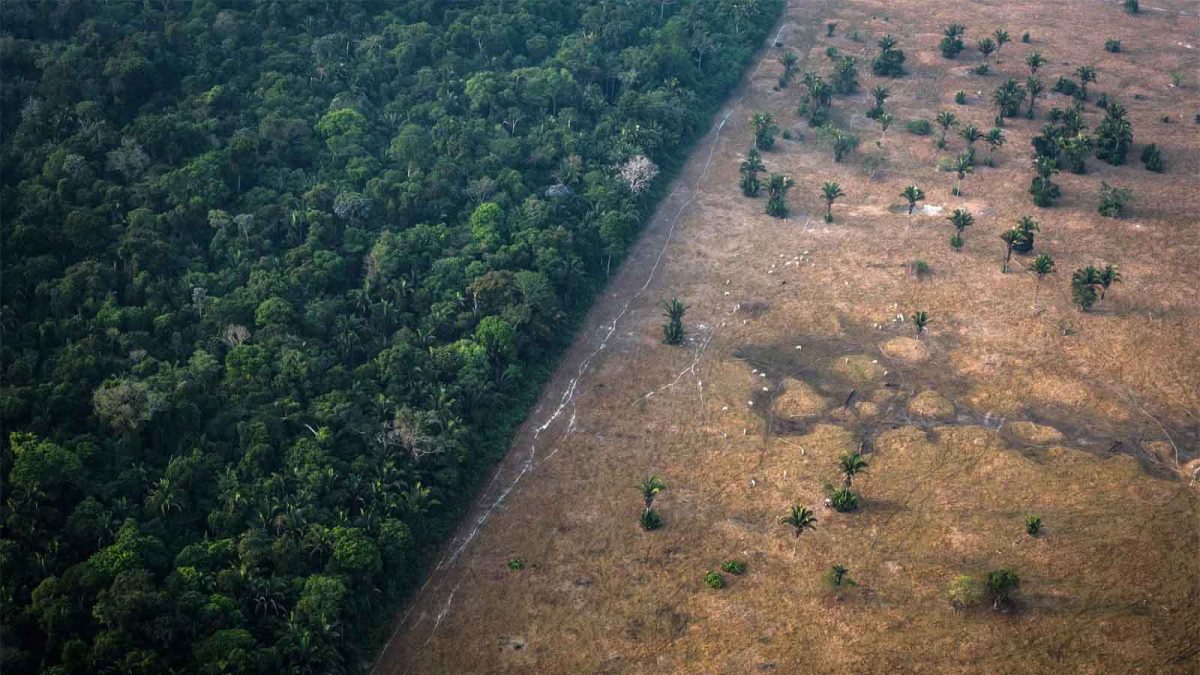(Grist.Org) – The Amazon rainforest, one of the world’s most diverse ecosystems and a major absorber of carbon dioxide, is losing its ability to recover from disturbances such as deforestation, fire, and drought, according to new research published in the journal Nature Climate Change.
Using satellite data, researchers from the University of Exeter in the United Kingdom and Technical University of Munich found that around 75 percent of the Amazon has become less resilient since the early 2000s, returning to its former state more slowly or not at all after destructive events.
That’s an indication that the forest is getting closer to a point of no return, the scientists warn, where drier weather driven by climate change and deforestation could cause permanent forest dieback, potentially transforming the ecosystem into something more closely resembling a savanna or grassland.
That would devastate the forest’s biodiversity, as well as the lives of the Indigenous peoples that rely on it to survive. It would also disrupt global water cycles and turn the Amazon from a carbon sink to a carbon source, releasing much of the estimated 150 to 200 billion metric tons of carbon stored in its trees — further accelerating climate change.
Resilience — the ability of the rainforest to restore itself to a stable state after a destructive event — has long been a key feature of the forest, said Niklas Boers, a climate scientist at the University of Exeter and one of the authors of the new study, allowing it to bounce back from fluctuations in rainfall and temperature over millions of years.
But with a rapid rise in regional temperatures of 1 to 1.5 degrees Celsius (1.8 to 2.7 degrees Fahrenheit) over the last century, rather than growing back, the forest is now experiencing a positive feedback loop where less tree cover in turn leads to less rainfall, drying out other parts of the system.
“The rainforest has retreated and moved back and forth, but it has always survived these changes in rainfall,” Boers said at a press conference announcing the study’s results. What’s new now is human-driven warming and large-scale deforestation, which “attacks the direct ability of the rainforest to cope with these changes.”
Scientists have long warned that the Amazon could eventually reach this tipping point. Peter Cox, another researcher at the University of Exeter, published a landmark paper in 2000 projecting that under a “business as usual” scenario, increased carbon dioxide concentrations would encourage the warming and drying out of the Amazon, leading the earth’s surface to become a net emitter of carbon by around 2050.
Unlike the previous research, though, the new study uses real-world data to show that the forest has already begun moving in that direction, rather than relying on theoretical models, said Chris Boulton, also from the University of Exeter and lead author of the study. It also found that the loss of resilience was more prominent in areas that are already drier and closer to human activity, indicating that further encroachment — like the fires that burned more than 1 million acres last year in Brazil alone, mostly as a result of intentional conversion of forest to ranchland for cattle — would have a domino effect on parts of the Amazon that have so far been left intact.
The researchers couldn’t say how long it would take to reach that tipping point. But in 2018, Thomas Lovejoy and Carlos Nobre, scientists from the United States and Brazil, estimated that that threshold could be crossed once 20 to 25 percent of the Amazon is lost to deforestation. Some 15 to 17 percent has already vanished. And the new study’s authors agreed that once that point was reached, the forest could be lost completely in a matter of decades.
Boers said that despite the uncertainty, he expects the dieback to “happen faster than the meltdown of the Greenland Ice Sheet — much, much faster.” That should be ample cause for alarm, he said, but it’s also a reason for hope, because that critical point hasn’t been reached yet. “We think that there is some time where we could drive the conditions back and save the system,” Boers said, but “this window of opportunity for the Amazon is extremely narrow.”
This story was originally published by Grist. You can subscribe to its weekly newsletter at: https://bit.ly/3pdmU9w





